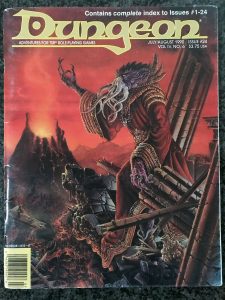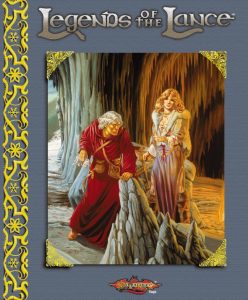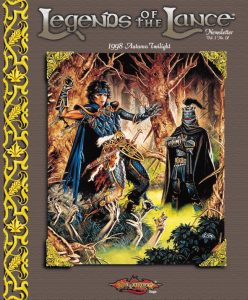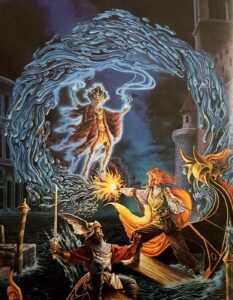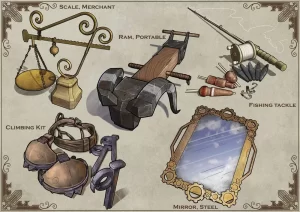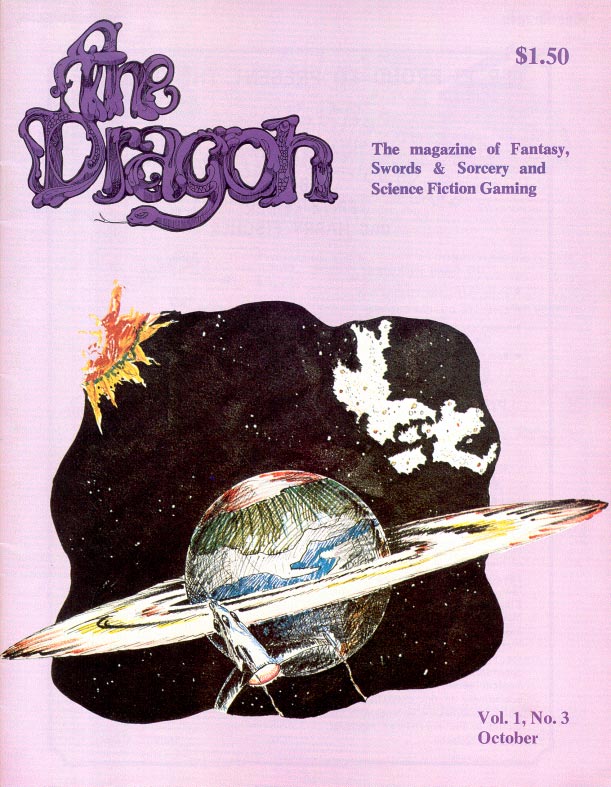
In the annals of tabletop roleplaying history, Dragon Magazine stands as one of the most influential publications ever to grace the hobby. Issue #3, published in October 1976, was still in the early days of what would become a legendary magazine series. Packed with insights, house rules, game expansions, and thrilling fiction, this issue reflects the pioneering spirit of Dungeons & Dragons' formative years. For those who love the nostalgia of old-school RPGs, this deep dive into The Dragon is both a time capsule and a treasure trove of gaming ideas.
Timothy J. Kask, the magazine's editor, sets the tone with an impassioned editorial defending the inclusion of fiction within The Dragon. He argues that imagination is the heart of fantasy gaming, and exposure to a variety of stories enriches a player's ability to craft engaging adventures. He addresses criticism from readers who feel fiction is extraneous, explaining that every bit of fantasy, science fiction, or sword and sorcery fiction a player absorbs contributes to their gaming experience - whether they agree with the ideas presented or actively reject them.
In an era when many campaigns were heavily influenced by a single mythos or author, Kask champions diversity, advocating for campaigns that weave together multiple inspirations to create a richer world. He even teases an upcoming Gardner Fox Niall story in issue #6, proving that fiction isn't going anywhere.
One of the most fascinating pieces in this issue is a historical retrospective by Gary Gygax himself, detailing War of the Empires, one of the earliest science-fiction wargames. Originally conceived by Tullio Proni in 1966, the game centered around an intergalactic conflict between two factions: the imperialist Greatest Empire and the freedom-fighting League of All Worlds.
The game was primarily designed for postal play, an old-school precursor to modern PBEM (Play By Email) or online strategy games. Players submitted moves via mail to the Master Computor, who processed results and sent updates. Battles were determined by ship movements, planetary values, and the construction of new fleets. Unfortunately, the game suffered from the challenge of maintaining a consistent newsletter, and after a few promising revivals, it ultimately faded into obscurity.
Gygax's recounting makes it clear that War of the Empires was ahead of its time - an ambitious attempt at persistent, strategic science-fiction storytelling long before digital games made such campaigns more accessible.
One of the most intriguing articles in this issue presents house rules for incorporating female characters in Dungeons & Dragons. It introduces adjustments to attribute generation, class abilities, and even beauty as a stat that affects certain spells and abilities.
While an interesting attempt to differentiate male and female characters mechanically, the article offers attributes like Seduction spells and notes that women are generally weaker fighters than men but excel in magic and thievery. The piece provides insight into early D&D design philosophies and the experimental approach that defined its early years.
This issue continues the serialized fantasy story The Search for the Gnome Cache by Garrison Ernst (a pseudonym for Gygax himself). The story follows the young nobleman Dunstan as he embarks on a life of adventure, running afoul of rogues, brawlers, and local law enforcement.
This chapter is filled with classic fantasy tropes - tavern brawls, cunning escapes, and brushes with the authorities. Readers get a taste of the setting's medieval culture, as well as a glimpse of Gygax's storytelling style outside of adventure modules. The narrative feels like an early attempt at bringing a campaign setting to life through prose, much like how later game designers would novelize their own worlds.
Character backstory generation is a key part of modern RPGs, but even in 1976, players were looking for ways to flesh out their heroes' origins. Birth Tables for D&D provides a set of randomized tables that determine a character's birthplace, social status, and parentage. While simplistic by today's standards, it adds a fun layer of depth for players who enjoy rolling up characters with a bit more narrative weight.
These tables help answer questions like - Was your character born into nobility, or did they claw their way up from a peasant's hovel? Were they raised in a bustling city, a sleepy village, or a secluded monastery? Did their parents die tragically, leaving them orphans destined for greatness?
For those who love adding storytelling elements to their games, this article is a prime example of how early D&D was already moving beyond simple dungeon crawls into immersive roleplaying territory.
In a time before prestige classes and extensive class archetypes, creative players were already tinkering with new ways to expand D&D's character options. A Plethora of Obscure Sub-Classes introduces some experimental takes on the classic Fighter, Cleric, Magic-User, and Thief.
Among the oddities are - The Healer, a Cleric variant with a stronger focus on non-combat restoration. The Witch, a Magic-User with access to unique enchantments. The Duelist, a Fighter who excels in one-on-one combat.
While many of these subclasses were eventually refined or replaced by later editions of the game, it's fascinating to see how players were already pushing the boundaries of what a D&D character could be.
Dragon Magazine #3 is a glimpse into the wild west of early RPG design - where house rules were gospel, fiction blurred the lines between storytelling and gameplay, and players were eager to tweak and expand the game in any way possible. From Gary Gygax reminiscing about lost wargames to experimental class ideas, this issue embodies the pioneering spirit of the hobby's earliest days.
For modern readers, it offers a mix of nostalgia, historical insight, and gameable ideas that, with a little tweaking, could still be used today. Whether you're a grognard looking to relive the golden age of tabletop RPGs or a new-school player interested in the roots of D&D, Dragon Magazine #3 is a must-read artifact from a time when the game was still defining itself.
So grab your dice, take a seat at the table, and step back into 1976 - a time when RPGs were just beginning their ascent to legend.
